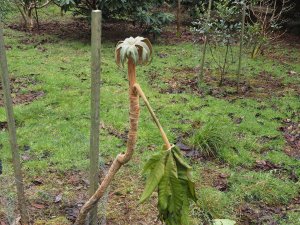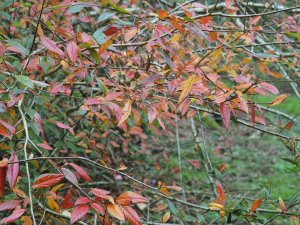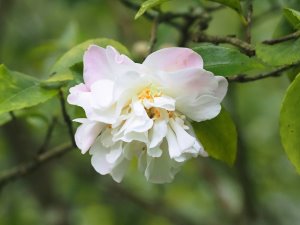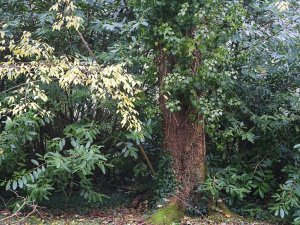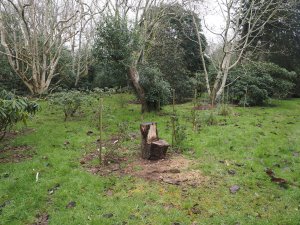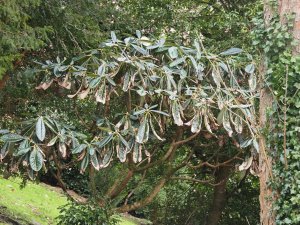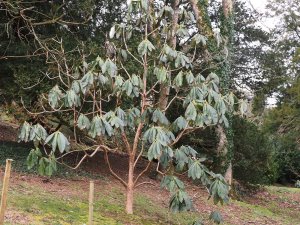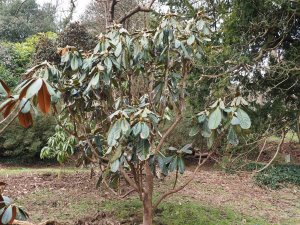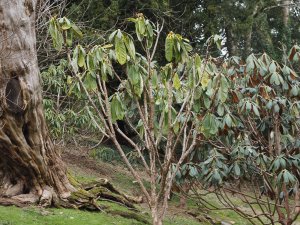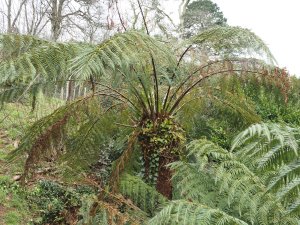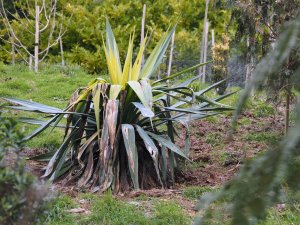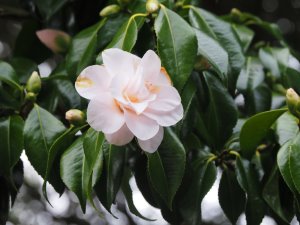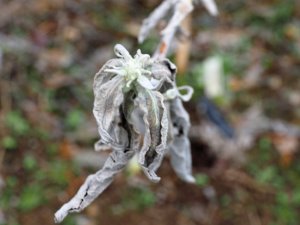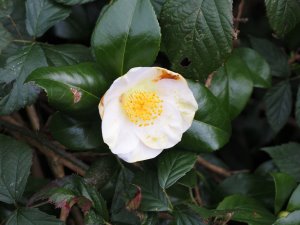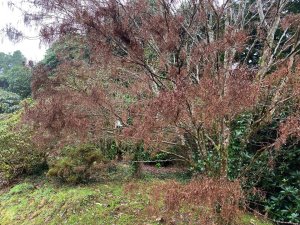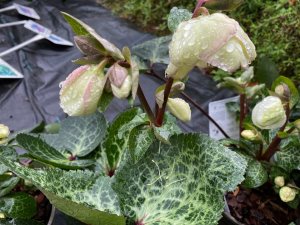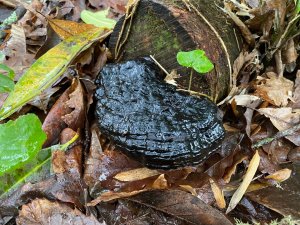2025 – CHW
2024 – CHW
Camellia lutchuensis has hardly opened at all in the last fortnight.
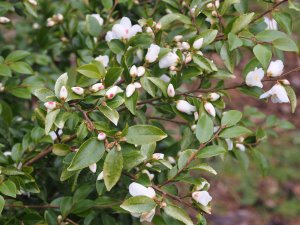
2023 – CHW
A series of pictures of big leafed rhododendrons suffering from drought, frost and lack of new growth last year all on Sinogrande walk.
Acer palmatum ‘Scolopendrifolium’ on the drive at Burncoose always holds its old leaves through the winter. An unusual habit for an Acer palmatum type.
2021 – CHW
Watching yet another Plant Heritage webinar on buddleia last night I was struck how far we could we could improve on the varieties which we currently grow and offer on the Burncoose website.
Longstock Park Nursery and Peter Moore have held the National Collection of buddleia since 1998. Seventy varieties of Buddleia davidii in the collection and 14 new varieties bred by Longstock are now available in the nursery trade.
We still offer the Nanho strain of supposedly dwarf growing buddleia but the US bred ‘Buzz’ varieties are smaller growing, more dwarf, and have larger flowers.
Buddleia ‘Black Knight’ and ‘Empire Blue’ have been superseded by ‘Buzz Indigo’ / ‘African Queen’ as good purples and by ‘Blue Horizon’ as a darker blue.
B. ‘Orchid Beauty’ has spectacular balls of flowers up the flower spike.
B. ‘Santana’ is better than our B. ‘Harlequin’ which reverts a lot to being unvariegated in its leaves.
B. ‘Buzz Velvet’ and B. ‘Sugar Plum’ are better than B. ‘Royal Red’.
A fair bit of naughtiness and cheating in the naming of new varieties too. B. ‘Hocus Pocus’ with yellow flowers (touched up in the adverts) sold by Hayloft is really just B. ‘Sungold’ (or so Moore maintains).
So a bit of thought, stock plant buying, and a new look at some trade liner lists to help us improve our offering to customers of better plants for garden growing.
Now the RHS Council are asking members to vote at the next AGM on a rule change which will allow Council to ‘appoint’ (in ‘exceptional circumstances’ of course but determined by them) and support for election NON qualifying NON RHS members. Previously, to be eligible for election to the Council, you had to be an RHS member for three years and have the written support of 10 well known RHS members to stand for election.
We can all guess what this means. The RHS will be taken over, as have other well-known public charities (RSPCA, RSPB, National Trust), by left wing thinkers with a woke and political agenda. More of Mr Weed’s ‘diversity’ drive here.
This is all portrayed as ‘routine’ RHS business but it is not! The beginning of unwelcome change where the RHS becomes a climate action group rather than sticking to its charter as a plant based charity delivering what its members have always wanted.
VOTE it out!




